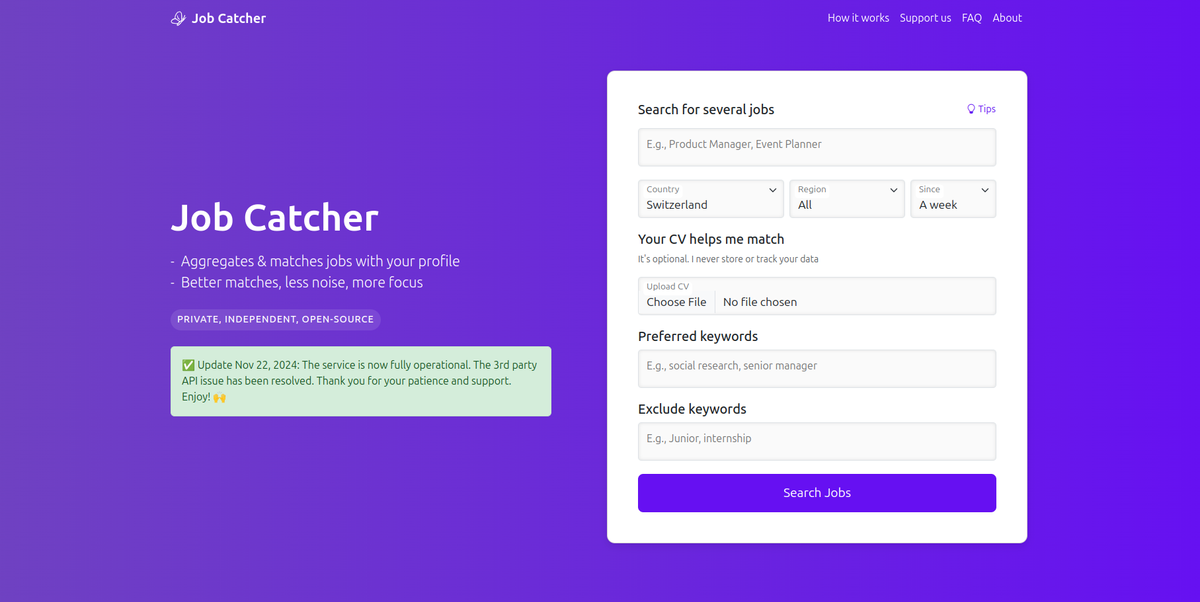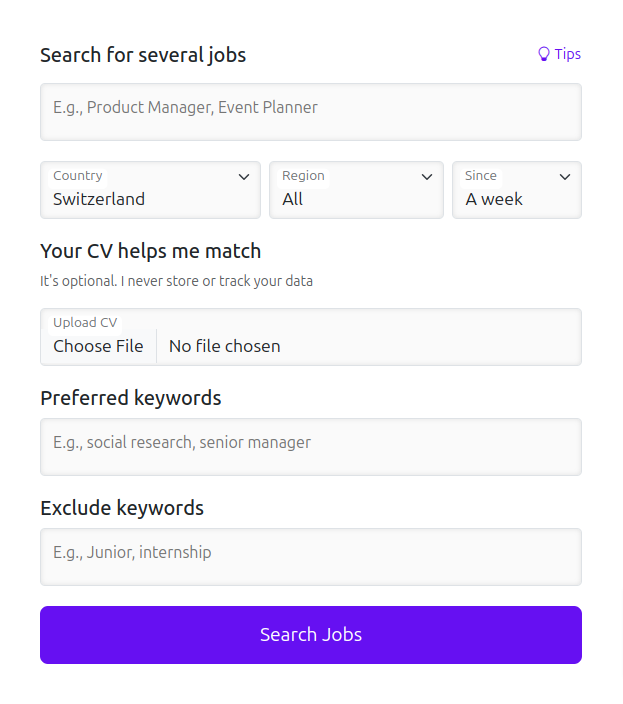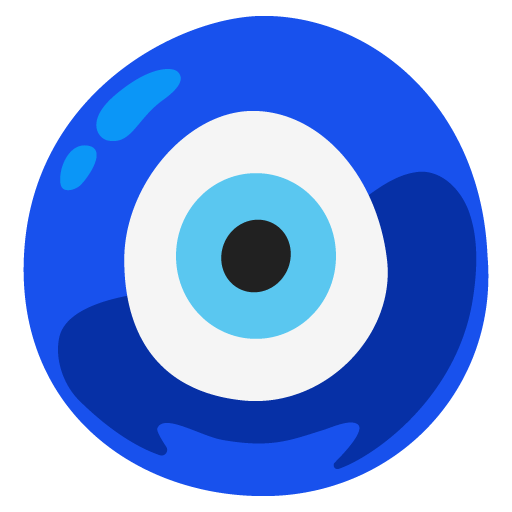Projects
Job Catcher
Fixing online Job Search

Online job search experience is dismally broken. Job boards, whether through negligence or design, often provide poor search results, forcing users to waste countless hours scrolling through irrelevant listings. Through interviews with my colleagues in UX and tech, a clear pattern emerged: the process is riddled with mindless effort and irrelevant results:

Even more surprising is that we now have advanced semantic matching techniques that could provide highly relevant matches, allowing job seekers to focus on what truly matters: developing their skills, networking, and planning their career moves.
This led me to create Job Catcher, an advanced semantic matching tool that helps users find relevant job postings using their specific profiles.
Prototyping new semantic search
I approached the development with user-first in mind, combining design work with continuous interviews and testing. The concept started as a single-page application with search functionality front and center, allowing users to begin their search immediately upon landing.
Drawing from my experinece in coding and information retrieval, I created a functional prototype. Generative AI tools like ChatGPT and V0 accelerated the journey, helping me implement a working ranking algorithm in one week.
Measuring the experience of AI
Testing AI-powered tools requires a different approach than traditional digital products. Since machine learning interactions are probabilistic rather than deterministic, measuring relevance with functional prototypes and real data became crucial:

This approach to testing me to:
- Measure the relevance of dynamically generated content
- Validate the core value proposition
- Understand how well the tool met user expectations
This approach also demands closer interaction between user testing and model validation. To develop the algorithm, I created a small evaluation dataset of 30 manually ranked job ads, which proved sufficient for rapid prototyping and identifying promising algorithmic approaches.
The experimental results were encouraging: all participants found Job Catcher's results more relevant than conventional platforms like LinkedIn and Glassdoor, with an average 40% improvement in search result quality.
Iterative Refinement
User testing revealed several areas for improvement. The redesign process focused on:
- Optimizing the search form to capture essential information without overwhelming users
- Refining UX copy to clarify the search process
- Building trust through transparency about data usage
- Explaining how the tool works without distracting from core functionality

Sustainable AI development
I deliberately imposed strict computational constraints during development, working on an old laptop to ensure efficient resource usage. This approach led to:
- Minimal computational costs on modest hosting plans
- Sustainable AI usage while maintaining high relevance
- Effective use of optimized models like sentence transformers
The development process highlighted an interesting opportunity: using AI tools for coding and prototyping significantly reduced the time needed for UI design and full-stack development. While technical expertise remained essential, the gap between concept and functional prototype narrowed considerably.
This approach highlights a big potential for collaboration between design and engineering teams. By prototyping directly with functional code, we can reduce the effort typically spent on translating and communicating design intentions, streamlining the entire product development process.


